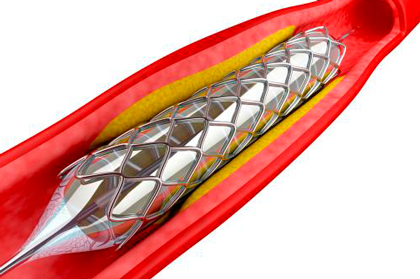There is little information comparing contemporary drug eluting stents (DES) against bare metal stents (BMS), for PCI in saphenous vein grafts in patients receiving (CABG).
This study aimed to assess clinical outcomes after PCI in saphenous vein grafts in patients receiving BMS, first generation DES, and new generation DES between 2006 and 2013. The study included inhospital events, and 30 day and one year mortality rates.
A total 15,003 patients received PCI in saphenous vein grafts during this period: 38% received BMS, 15% received first generation DES and 47% new generation DES.
Inhospital major adverse cardiovascular events was significantly lower in patients treated with new generation DES (OR, 0.51; CI 95%, 0.38–0.68; p<0.001) compared to those receiving older DES or BMS.
Also Read: “Second Generation DES Present Lower Mortality in Saphenous Vein Graft Lesions”.
Similarly, 30 day (OR, 0.43; CI 95%, 0.32–0.59; p<0.001) and one year mortality (OR, 0.60; CI 95%, 0.51–0.71; p<0.001) were lower with new generation DES.
Conclusion
Patients receiving new generation DES in saphenous vein grafts present lower inhospital adverse events rate, and lower 30 day and one year mortality compared to first generation DES and BMS.
Editorial Comment
A significant number of vein grafts (10-40%) will be occluded in the first year and this will inexorable continue at a 2-5% annual rate, which accelerates as time goes by. The risk of reintervention and the technical difficulty to treat the native artery makes it necessary to treat vein grafts with PCI (it might even reach 10% of cases).
Several factors make this territory more challenging for PCI and there is no doubt that this disease is far more aggressive in vein grafts than in native arteries. This difficulty, however, does not affect the choice of device: new generation DES are also better in this territory.
Original title: Choice of Stent for Percutaneous Coronary Intervention of Saphenous Vein Grafts.
Reference: Javaid Iqbal et al. Circ Cardiovasc Interv. 2017;10:e004457.
Subscribe to our weekly newsletter
Get the latest scientific articles on interventional cardiology
We are interested in your opinion. Please, leave your comments, thoughts, questions, etc., below. They will be most welcome.



